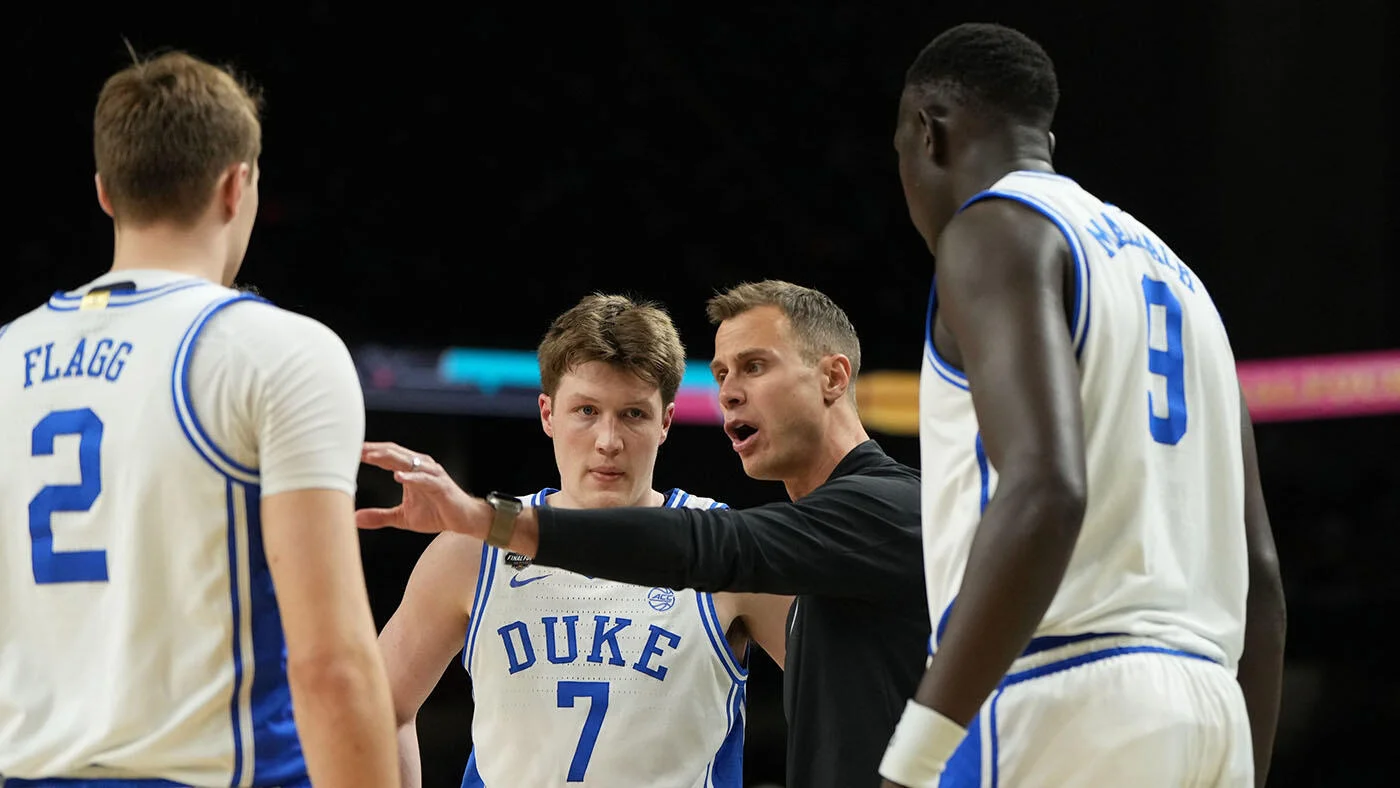Duke Just Played the Portal Like a Pro—And the ACC Is Shook
The transfer portal has revolutionized college basketball. No longer is roster building a slow, multi-year developmental process. In this new era, programs can go from rebuilding to reloading in a matter of weeks. Few have embraced this evolution with the poise, precision, and power of Duke. The Blue Devils just delivered a portal performance for the ages, pulling off a masterclass in roster construction that has left the rest of the ACC scrambling. With an elite recruiting class already in place and a surprising number of key returners, Duke just solidified its 2025-26 campaign as a full-on national title run—and the rest of the conference knows it.
At the heart of this portal success is second-year head coach Jon Scheyer, who has officially put to bed any lingering questions about whether he could thrive in the post-Coach K era. Scheyer, a former national champion and longtime assistant to Mike Krzyzewski, has now emerged as a recruiting force and a culture architect in his own right. While his first two seasons featured growing pains, including early tournament exits and some lapses in cohesion, Scheyer’s offseason has been nothing short of transformative.
The Blue Devils didn’t just enter the portal; they orchestrated a clinic. Every move was calculated. Every commitment addressed a specific need. And perhaps most importantly, every incoming transfer fits the Duke brand—high IQ basketball, team-first mentality, and elite skill development potential. That blend of strategic urgency and program identity made this portal haul feel less like a scramble and more like a chess game played four moves ahead.
Let’s start with the crown jewel: Maliq Brown. The former Syracuse forward was one of the most sought-after frontcourt players in the portal. At 6-foot-8 and 222 pounds, Brown brings a combination of defensive toughness, rebounding prowess, and high-energy hustle that Duke lacked in stretches last season. Brown averaged 9.5 points and 7.2 rebounds per game for a struggling Syracuse team but was often its lone bright spot defensively. At Duke, surrounded by more offensive firepower and defensive support, Brown is expected to anchor the Blue Devils’ interior defense and provide a level of physicality that was sorely missed in big games.
Then came the stunner—Olivier Rioux. The 7-foot-6 Canadian center and social media sensation transferred in from Florida, bringing with him both size and attention. While Rioux isn’t expected to start right away, the upside is massive—both literally and figuratively. He offers a unique matchup nightmare and rim-protecting insurance against bigger frontcourts. More importantly, Rioux is a long-term project with the right attitude. He’s not a player looking to be fed 20 shots per game. He knows his role and is committed to developing within Duke’s system. That kind of buy-in is rare from portal players, and it underscores just how effectively Scheyer and his staff have recruited not just talent, but fit.
But the biggest surprise of the offseason wasn’t who Duke added—it was who they retained. In an era where even second-round NBA draft projections often mean a player is as good as gone, Duke somehow convinced Cooper Flagg, the presumptive No. 1 pick in the 2026 NBA Draft, to return for his sophomore season. Flagg turned down multiple multi-million dollar NIL offers, including one reportedly upwards of $7.5 million from Georgia, to run it back in Durham. His return alone reshapes the entire landscape of college basketball.
Flagg’s freshman year was electric—highlighted by jaw-dropping blocks, game-winning buckets, and a Wooden Award to cap it off. Now, he’s back with even more firepower around him. Flagg’s commitment to Duke’s program continuity—not just chasing the next big paycheck—has resonated in the locker room and in the broader college hoops community. His presence is a magnet for talent and a nightmare for opponents.
It’s not just Flagg, either. Jared McCain, a fan favorite and sharpshooting guard with NBA aspirations, also chose to come back. As did point guard Tyrese Proctor, whose leadership and perimeter defense were invaluable during Duke’s tournament run. Add in the arrival of 5-star freshman phenom Khaman Maluach, the 7-foot-2 international sensation, and suddenly Duke’s frontcourt looks like a fortress. Maluach, paired with Rioux and Brown, gives Scheyer one of the deepest and most physically imposing rotations in the nation.
There’s also incoming freshman Isaiah Evans, a long, versatile scorer who can slide between the two and three. Evans is a walking bucket who could’ve started at almost any other Power Five school but will now likely begin the season coming off the bench—a testament to Duke’s insane depth. Add sharpshooter Kon Knueppel to the mix, who turned down overtures from NBA teams to stay loyal to Duke, and you’ve got a roster that’s not just stacked, but seasoned.
This isn’t just talent for talent’s sake. It’s a well-constructed machine. Scheyer and his staff have balanced experience and youth, power and finesse, star power and glue guys. They’ve built a team that can score in transition, lock down in the halfcourt, rebound with anyone, and rotate multiple defensive schemes. Most teams use the portal to plug holes. Duke used it to build a fortress.
And that’s why the ACC is shook. Programs like North Carolina, Virginia, and Miami—each with their own recruiting success stories—are now playing catch-up. They watched as Duke retained its best players, improved in the areas it struggled, and sent a message to the rest of college basketball: Durham is still the epicenter of excellence.
What’s most impressive is that Duke did all this without compromising its culture. The portal era is chaotic by nature. Players leave as quickly as they arrive. Coaches must re-recruit their rosters annually. Chemistry is fragile. But Duke has managed to foster a sense of continuity, even amidst the chaos. Much of that credit goes to Scheyer and his staff, who prioritize connection and accountability in every conversation. The result is a team that feels more like a returning Final Four unit than a patched-together experiment.
That continuity could be what separates Duke from other so-called “super teams.” The Blue Devils already have the advantage of a full offseason together. Unlike portal-heavy rosters that need months to find rhythm, Duke will enter November already humming. Their top players know each other. Their coaching staff knows their strengths. Their system isn’t being introduced—it’s being refined.
From a broader perspective, Duke’s portal success represents a turning point. For years, skeptics wondered if traditional blue bloods could adapt to the new era of player empowerment and roster fluidity. The answer from Durham is a resounding yes. But it’s more than just adaptation—it’s domination. While other programs dip their toes into the portal, Duke dove headfirst with a plan. They didn’t chase hype. They pursued chemistry. And they succeeded.
Now, the rest of the ACC—and the nation—must respond. Because the 2025-26 Duke Blue Devils are not just the most talented team in the conference. They are the most prepared. They are the most versatile. And they are the most dangerous.
In many ways, this offseason felt like a statement. Duke isn’t waiting for the next great era to arrive. They’re already in it. Cooper Flagg’s return. Brown’s arrival. Rioux’s potential. McCain’s loyalty. Maluach’s upside. Every move sends the same message: This program still leads.
For the ACC, that’s a sobering reality. For Duke fans, it’s a thrilling one. The portal was supposed to level the playing field. Duke just tilted it back in their favor.
Duke Blue Devils 2025–26 Men’s Basketball Roster
| Player Name | Position | Height | Class | Status/Notes |
|---|---|---|---|---|
| Caleb Foster | G | 6’5″ | Sophomore | Returning; expected to start at point guard. |
| Isaiah Evans | G/F | 6’6″ | Sophomore | Returning; poised for a breakout season. |
| Maliq Brown | F | 6’8″ | Junior | Returning; key defensive presence in the frontcourt. |
| Patrick Ngongba | C | 6’11” | Sophomore | Returning; provides depth at center. |
| Cedric Coward | G/F | 6’6″ | Graduate | Transfer from Washington State; averaged 17.7 PPG before injury. |
| Cameron Boozer | PF | 6’9″ | Freshman | Incoming 5-star recruit; son of former Duke star Carlos Boozer. |
| Cayden Boozer | G | 6’4″ | Freshman | Incoming 4-star recruit; twin brother of Cameron Boozer. |
| Shelton Henderson | SF | 6’6″ | Freshman | Incoming 4-star recruit; adds versatility on the wing. |
| Nikolas Khamenia | PF | 6’8″ | Freshman | Incoming 4-star recruit; brings size and skill to the frontcourt. |



